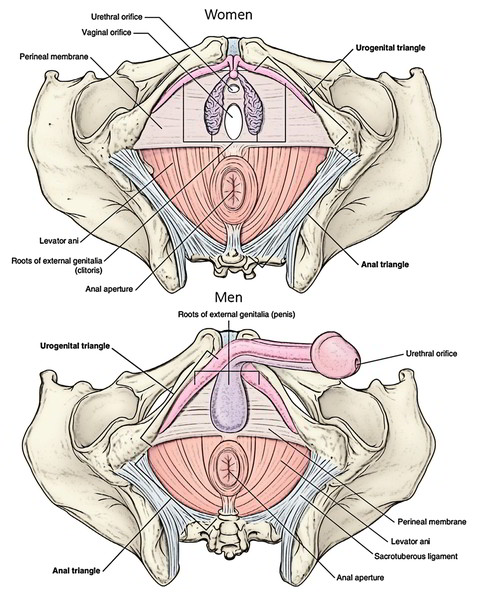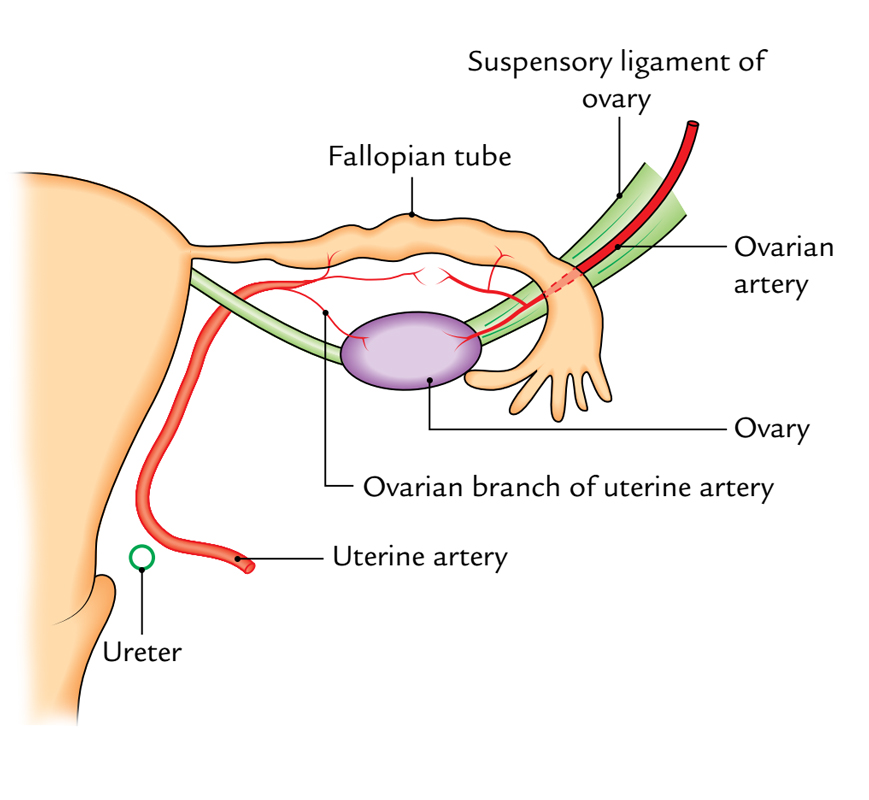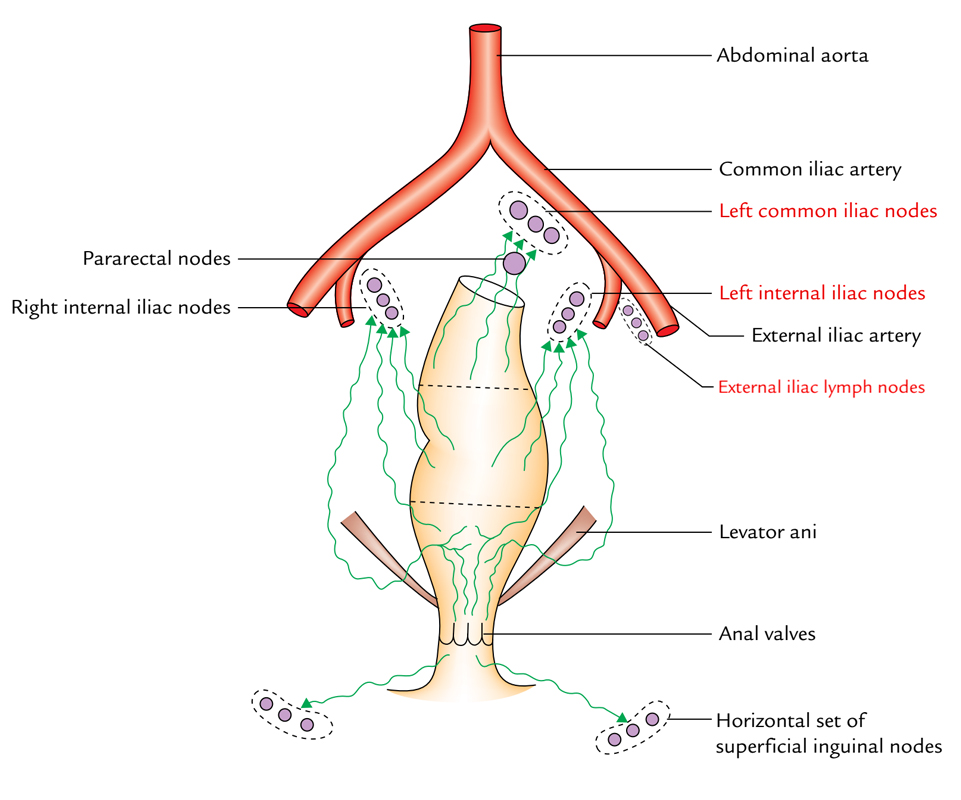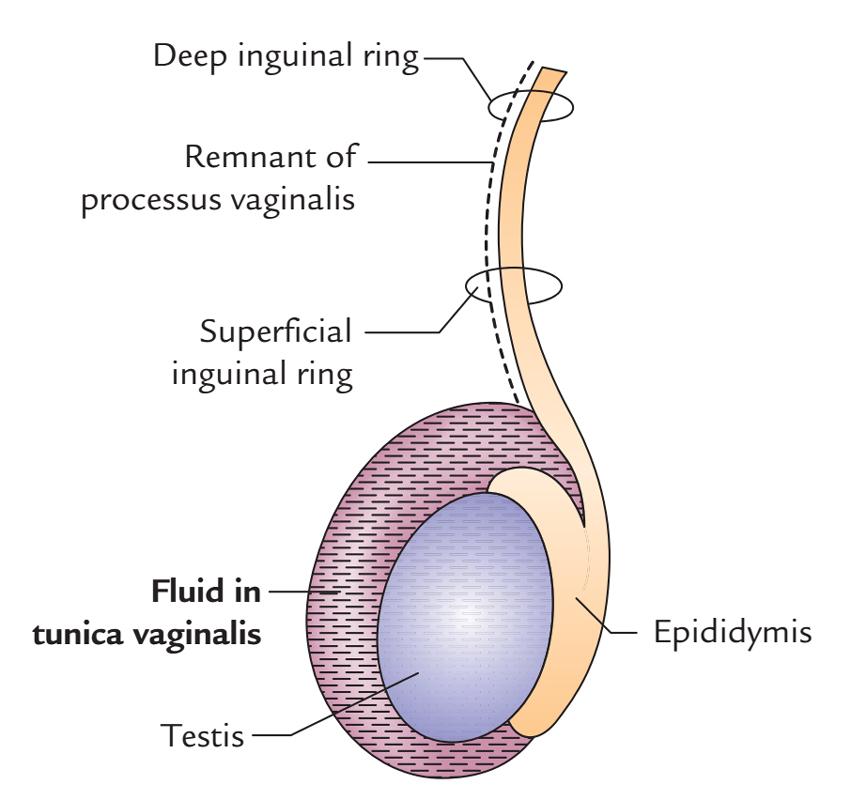This article explains lymphatic drainage of pelvis; it includes major regions like pelvis, perineum and genitals.
Pelvic viscera
Lymphatics from majority of pelvic viscera primarily empty within lymph nodes scattered nearby:
- Internal iliac arteries
- External iliac arteries
- Branches related to them.
These then drain into nodes connected with the common iliac arteries and afterwards inside the lateral aortic or lumbar nodes which are connected with the lateral surfaces of the abdominal aorta.
Then, lateral aortic or lumbar nodes channel into the lumbar trunks, which continue towards the point of origin of the thoracic duct around plane of vertebra TXII.
Perineum

Perineum
Nodes nearby the internal iliac artery also obtain drainage from the gluteal zone of the lower limb as well as from deep zones of the perineum along with draining pelvic viscera.
Lymphatic vessels from deep portions of the perineum escort the internal pudendal blood vessels and channel primarily within the pelvis in internal iliac nodes.
Genital organs
External genitals
The superficial external pudendal blood vessels go along lymphatic vessels from superficial tissues of the penis or the clitoris and generally drain inside superficial inguinal nodes, so do lymphatic channels via the scrotum or labia majora.
Deep inguinal nodes and external iliac nodes obtain drainage from the glans penis, glans clitoris, labia minora and terminal inferior end of the vagina.
Testes
Lymphatics from the testes drain via vessels which rise up in the spermatic cord passes via the inguinal canal, and travel up the posterior abdominal wall in order to attach directly around vertebral planes LI and LII with lateral aortic or lumbar nodes and pre-aortic nodes around the aorta.
Ovaries

Ovary
Lymphatics from the ovaries and related parts of the uterus and uterine tubes leave the pelvic cavity superiorly and drain, via vessels that accompany the ovarian arteries, directly into lateral aortic or lumbar nodes and, in some cases, into the pre-aortic nodes on the anterior surface of the aorta.
Lymph Nodes
Lymph nodes differ in size, number and location in different individuals. They are divided in four groups:
- Sacral nodes
- Internal/Deep iliac nodes
- External/Superficial iliac nodes
- Common iliac nodes
They are entitled in relation to the arteries that they are related with. Inside the nearby connective tissue small nodes can be found alongside the route of several branches of the internal iliac artery.
Classification of Lymph Nodes
Sacral nodes

Lymph Node Classification
They are located in the hollow part of the sacrum. They obtain vessels via pelvic, perineal as well as gluteal regions and they drain inside the internal iliac or common iliac nodes.
Internal iliac nodes
- They are located near the internal iliac artery and obtain channels via pelvic viscera, perineum and hips. They channel inside common iliac nodes.
External iliac nodes
- They are found near the external iliac artery region and obtain vessels via superficial as well as deep inguinal nodes, some from pelvic viscera and abdominal wall inferior to umbilicus. They drain in common iliac nodes
Common iliac nodes
They receive drainage from external and internal iliac nodes and sacral nodes and they channel into the lumbar nodes.


 (47 votes, average: 4.70 out of 5)
(47 votes, average: 4.70 out of 5)